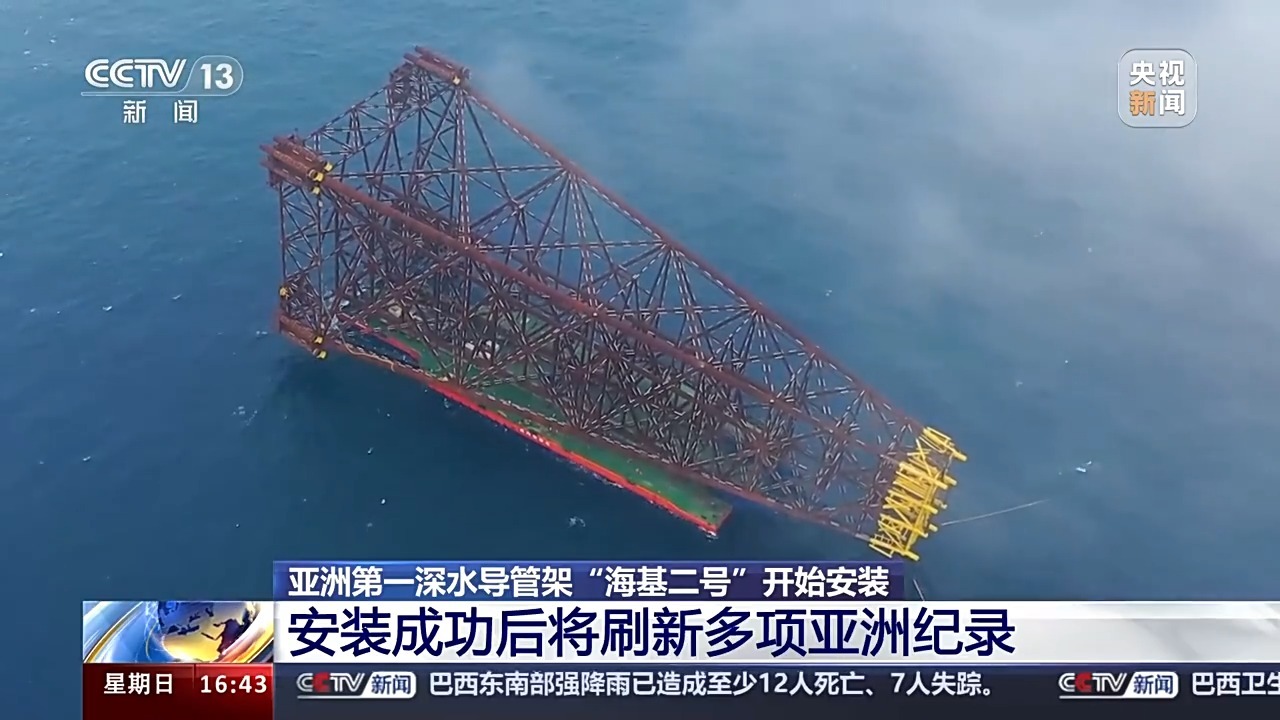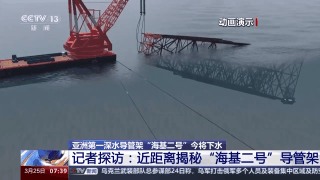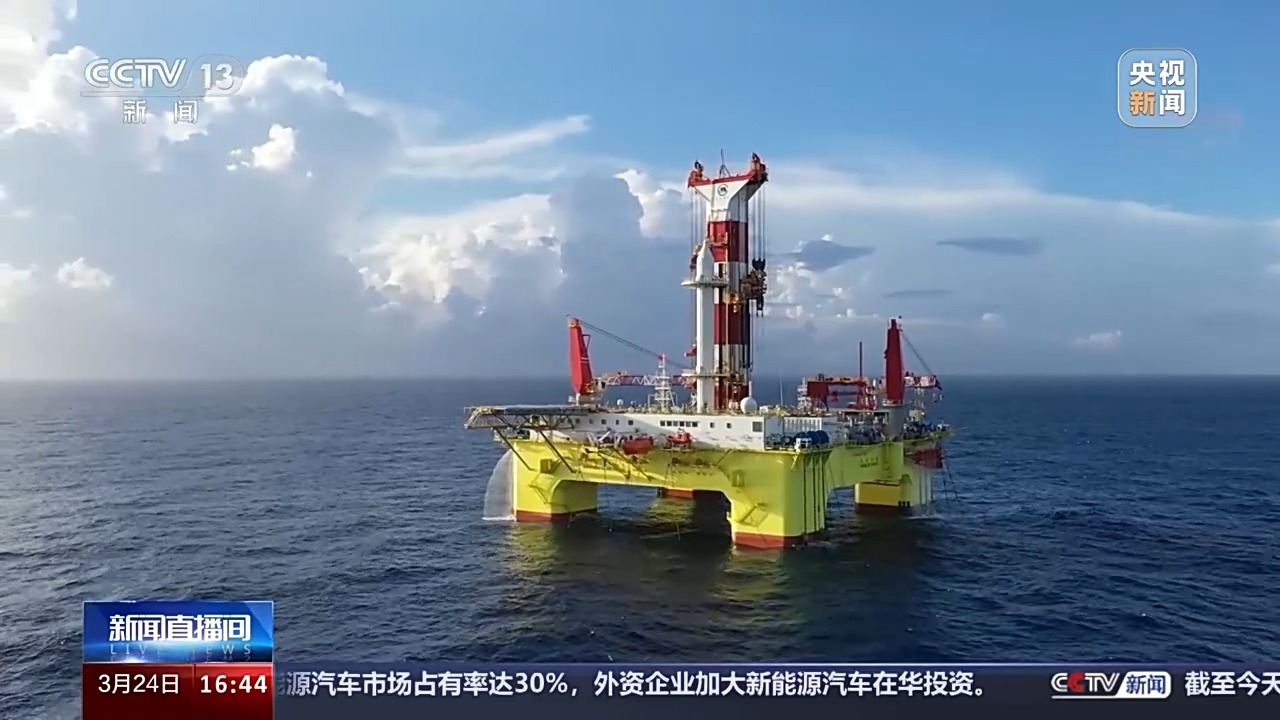
On the morning of March 25th, Asia's first deepwater pipe-laying vessel Haiji-2 smoothly slid into the waters of the Pearl River Basin, setting multiple records for Asia in terms of launch weight and operating depth.

The average water depth of the operating area for Haiji-2 is approximately 324 meters, with a 338.5-meter-high pipe-laying structure and a weight of 37,000 tons. The amount of steel used is comparable to that in the construction of China's National Stadium, "Bird's Nest". Such an achievement has tested the limits of domestic construction sites, transportation, equipment installation, and vessel capabilities, posing a series of challenges such as foundation settling, large-scale lifting, weight and size control, ship transportation, and installation procedures.

Using a combination of 34 robust steel pipes and 12 welded panels to firmly connect to the oil tanker, Haiji-2 is able to withstand even the strongest winds and waves during towing. Prior to the vessel's launch in water, the 36 welding points will be sequentially cut and separated. Once released, Haiji-2 will freely glide into the sea under its own gravity along the laid tracks.
The two sliding tracks spanning the length of the entire transport ship are coated with Teflon, which can reduce friction and help them to withstand high temperatures, enabling the entire 300-meter-long pipe-laying structure to smoothly slide into the water within just about a minute.
Next, Haiji-2 will continue with construction activities including water injection and alignment of the pipe-laying structure. Once completed, the deepwater platform of Haiji-2 will stand at a total height of 428 meters and exceed 50,000 tons in weight.
It will become Asia's tallest offshore oil and gas production platform, operating in the waters approximately 220 kilometers southeast of Shenzhen, with a depth of about 325 meters. This project aims to carry out the secondary development of the Liuhua Oilfield, a billion-ton-grade deepwater mature oilfield.

Source:Yangcheng Evening News
亚洲第一深水导管架“海基二号”成功下水
3月25日上午,亚洲第一深水导管架“海基二号”在珠江口盆地海域成功滑移下水,创造了下水重量、作业水深等多项亚洲纪录。
“海基二号”作业海域平均水深约324米,导管架总高338.5米,总重37000吨,用钢量接近“鸟巢”国家体育场,达到国内建造场地、运输、安装装备及船舶的能力极限,由此带来地基沉降、大型吊装、重量尺寸控制、装船运输、安装等一系列挑战。
“海基二号”通过34根强有力钢管和12个焊接板,和海洋石油229驳船牢牢地焊接成一体,这个设计可以确保“海基二号”在拖航过程中即使遇到大风大浪也能稳如泰山。导管架下水之前,这36个焊接点将依次被切割分离。而当这些束缚一旦消失,“海基二号”将在自身重力作用下沿着铺设的轨道自由滑入海中。
贯穿整个运输船首尾的两条滑行轨道上涂有特氟龙涂层,有了它就可以减少摩擦力,而且还能够耐高温。这可以使整个300多米长的导管架,能够在短短一分钟左右的时间里,全部安全顺畅地滑行入水。
接下来,“海基二号”将继续进行导管架注水扶正等施工作业。“海基二号”深水导管架平台建成后,其总高度达428米,总重量超5万吨,将成为亚洲最高的海上油气生产平台,应用于距离深圳东南约220公里、水深约325米的海域,实现亿吨级深水老油田——流花油田的二次开发。
翻译 | 洪婷
-
BYD sets global record: 7 million new energy vehicles produced
2024-03-26 22:36:04 -
China regains top spot as Thailand's largest tourist source
2024-03-25 23:17:18 -
Hong Kong employee falls victim to 'AI face-swapping' scam, experts advise on prevention
2024-03-25 23:17:42 -
Guangzhou Marathon named an influential event of Chinese Athletics Association in 2023
2024-03-24 23:49:21






